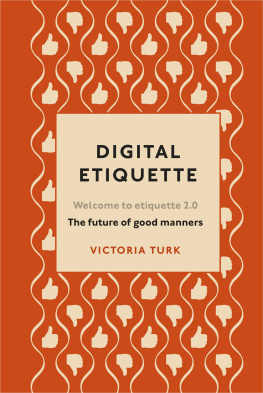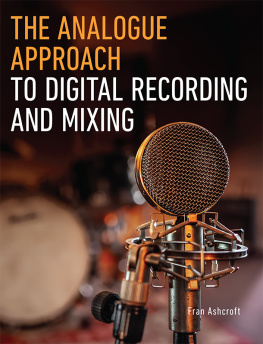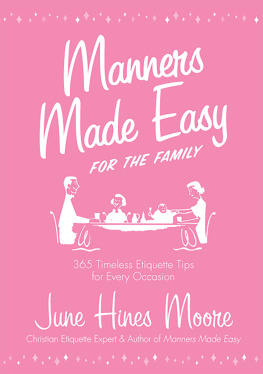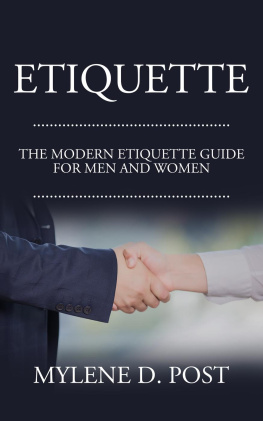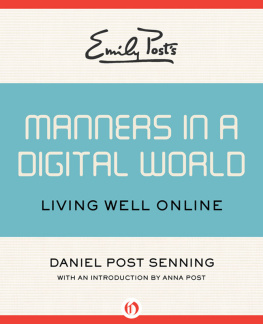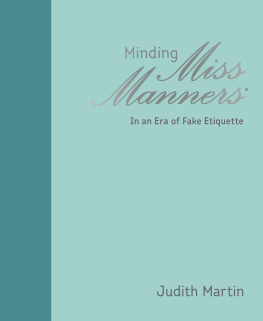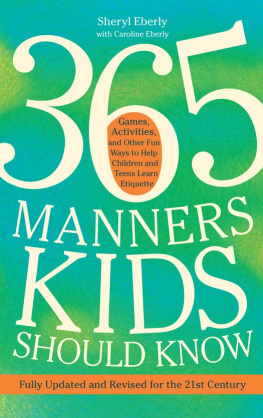
DIGITAL
ETIQUETTE
VICTORIA TURK

CONTENTS
ABOUT THE AUTHOR
Victoria Turk is a senior editor at WIRED, where she edits the culture section of the print magazine, leads video strategy, and writes regularly for print and web. Before working at WIRED, she was technology editor at New Scientist and UK editor at Motherboard, VICEs tech and science channel.
INTRODUCTION
On the internet, no one knows youre a dog but thats no excuse for poor manners.
Etiquette might sound like an old-fashioned idea in modern times, but its about a lot more than knowing which fork to use. It is the social glue that binds us together, the code that lets us easily communicate without misunderstanding each other or causing offence. It helps us to avoid awkwardness and show respect to others, all while presenting ourselves in the best possible light.
But all too often, good manners seem to dissolve in the glare of a smartphone screen or the clicking of a keyboard. This isnt (usually) out of any malice; the problem is that theres very little consensus on what constitutes good conduct in the digital world. You might know your way around a dinner party, but how confident are you on the etiquette of WhatsApp groups? Does your Tinder profile meet generally accepted standards of decorum? And where does one even begin with social media? Any guidance on the correct usage of memes is conspicuously absent from my copy of Debretts
Its no wonder were all confused. Behind our screens, communication is often conducted through text, meaning it doesnt benefit from social cues such as facial expressions and body language. Communication is rarely truly private, increasing the potential for embarrassment, and it almost always leaves a digital trail all the better to capture a permanent record of your every indiscretion.
In the 1990s, people used to talk about netiquette to describe a kind of general internet code of conduct. But as more and more of our interactions move online, we need more nuance. Context is critical: you wouldnt behave the same in an email to your boss as you would in a Snapchat message to your crush (or at least I hope you wouldnt). And as technology evolves, so too does our behaviour. Famed etiquette author Emily Post never had to consider how best to slide into someones DMs, or deal with the exquisite agony of being left on read.
This book sets out to illuminate digital etiquette across the four major spheres of everyday life: work, romance, friendship and community. As well as offering practical advice, it reflects on some of the quirks of modern digital culture, and the behaviours we have developed to navigate these treacherous times. As technology moves on and customs change, it can be hard to keep up, but the basic pillars of good manners remain the same. Good etiquette means putting other peoples comfort first. It means having empathy and patience, and generally just not being a jerk.
Keep these basic tenets in mind and we can bring ourselves one step closer to the impossible: being nice to each other on the internet.
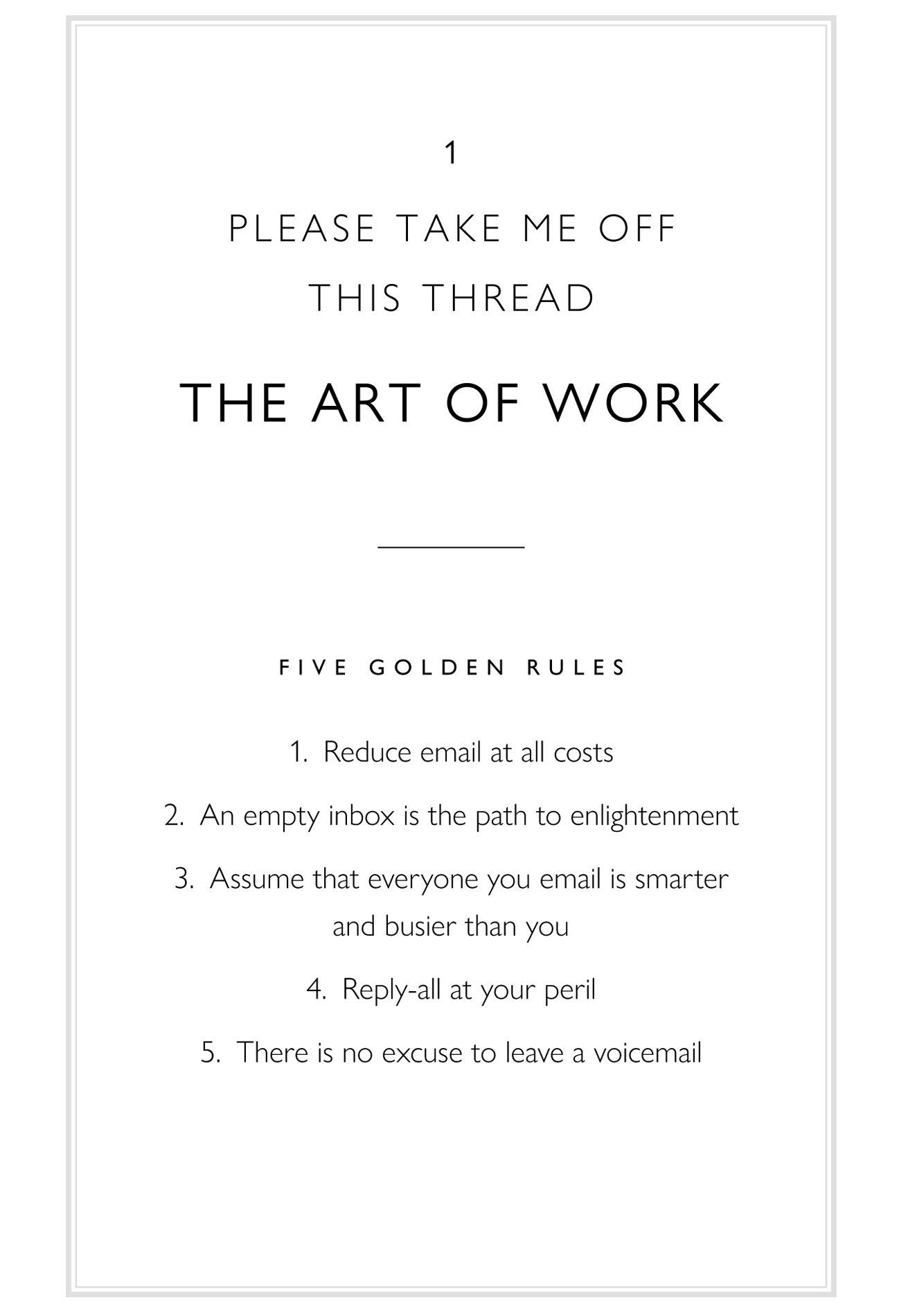
We spend most of our waking hours at work and, in many workplaces, the majority of that time is spent staring at screens. One particular medium has come to dominate office communication: email. Its probably the first thing you check when you start your work day, and the last thing you do before you leave. It is the bane of the modern condition, and on that basis it is here that we shall begin our study of digital etiquette.
Things werent always like this. Email has its roots way back before the internet as we know it, when American programmer Ray Tomlinson wrote some code that allowed users to send messages between computers on the ARPANET system (the precursor to todays internet) in the early 1970s. Tomlinson, who died in 2016, said he developed the system because it seemed like a neat idea and maintained that the first emails he sent were so insignificant he had forgotten them. Im sure we can all relate.
Its undeniable that email has had a transformative effect on work culture. Without it, wed never know the joy of working remotely, sharing ideas across continents, or passive-aggressively CCing the boss when dealing with an annoying colleague. But I think we can all agree that email is completely out of control. It no longer helps us do work; it is work. It may have freed us from the physical confines of the office, but mentally we can never leave. Email is distracting, time-consuming and intensely stressful.
This is where etiquette can help. The majority of the stress around email can be attributed to a lack of consensus on how to use it. How quickly must you respond to an email? How do you strike the right tone? And is there a law somewhere that says every message must begin Sorry for the late response?
Together we shall dissect the ins-and-outs of proper email protocol, from subject line to sign-off. We shall resolve once and for all when email is the correct medium to use and consider alternative workplace communications such as conference calls, instant messaging tools and (steel yourself) LinkedIn. Once youre done with this chapter, just leave it lying conveniently open on the desk of that one person in the office who still hasnt got their head around the unwritten rules of reply-all.
Office email
The paradox of email is that its simultaneously very convenient and utterly exhausting. Its often the most expedient way of getting things done, and yet it just seems to take up so much time.
If youre feeling the crunch, youre not alone. In one study presented at a conference in 2016, researchers asked 40 office workers to wear a heart rate monitor for 12 days and log their computer use during this time. The workers checked their email an average of 77 times a day and spent almost an hour and a half dealing with it. Sure enough, their heart data showed that the longer they spent on email within a given hour, the more stressed they were during that time. And the longer they spent on email each day, the less productive they felt they had been.
Given that email is such a universal horror, good email etiquette really revolves around one thing: reducing it as much as possible. A considerate emailer strives to take up as little of their recipients time and energy as they can. They email only when strictly necessary and take pains to make their messages as easy to deal with as possible. A considerate emailer understands that the best email is the one they dont actually send.

THE LIFE-CHANGING MAGIC OF TIDYING UP ( YOUR INBOX )
Before you can even think about sending emails to other people, you need to get your own house in order. After all, you cant hope to reduce the greater burden of email on the world if your own inbox is a digital dumping ground that threatens to engulf you with the next ping! of a notification. And if youre barely treading water in a quicksand of unread messages, you could easily miss the one you actually need to respond to.
Do a quick internet search and youll find that email management strategies are as abundant and diverse as fad diets often with similarly unsatisfying results. There are entire self-help books dedicated to this topic, of which this is not one, so Ill cut to the chase and give you the only advice you need to bother with.
Next page
